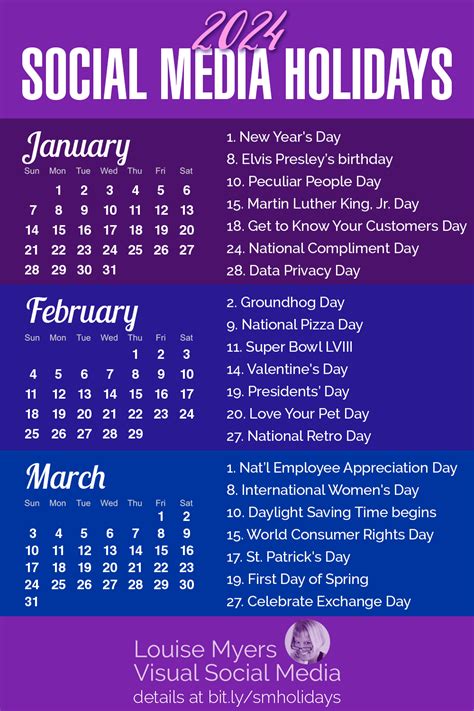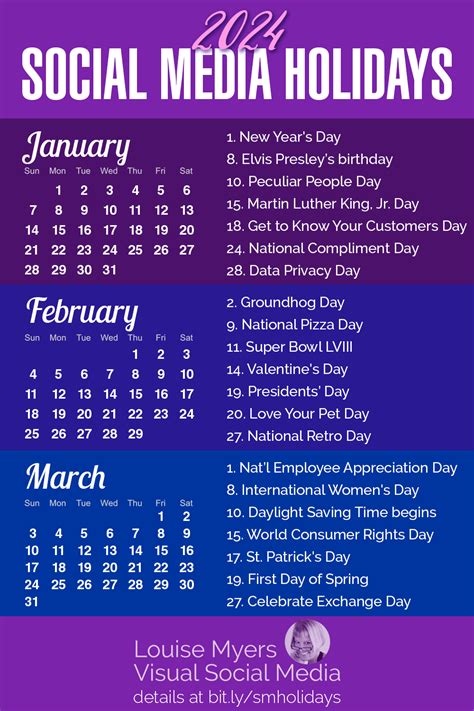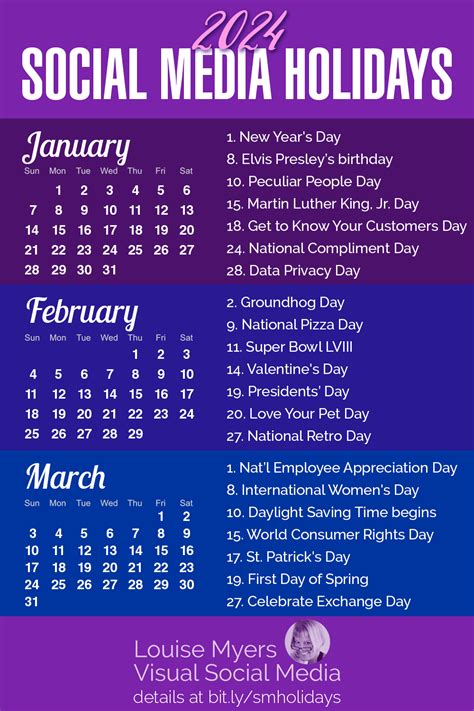Track and analyze social media holiday performance metrics for 2024. Understand, choose, set benchmarks, analyze results, and adjust strategies f
Understanding Social Media Holidays
Social media holidays are special days or events that are widely celebrated or recognized on social media platforms. These can be national holidays, awareness days, or even popular events that have gained popularity on social media. Marketers often use these holidays as an opportunity to create engaging and relevant content that resonates with their audience. Understanding the significance of these holidays is important for planning an effective social media strategy.
When it comes to understanding social media holidays, it’s crucial to research and identify the holidays that are relevant to your brand or industry. For example, a fashion brand may want to take advantage of National Dress Day, while a food company may capitalize on National Pizza Day. By aligning your content with these holidays, you can connect with your audience on a more personal level and increase engagement.
Another aspect of understanding social media holidays is recognizing the impact they can have on your overall marketing strategy. These holidays can provide an opportunity to showcase your brand’s personality and values, as well as foster a sense of community among your followers. Additionally, participating in these holidays can help increase brand awareness and reach new audiences who are searching for content related to the holiday.
Overall, understanding social media holidays is essential for creating relevant and engaging content that resonates with your audience. By aligning your content with these holidays, you can increase engagement, reach new audiences, and showcase your brand’s personality and values.
Choosing Metrics to Track
When it comes to measuring the success of your social media holiday campaigns, it’s important to choose the right metrics to track. There are a wide variety of metrics that can be measured, but not all of them will be relevant to your specific goals. This is why it’s crucial to carefully consider which metrics will provide the most valuable insights into the performance of your campaigns.
Some of the key metrics to consider tracking include engagement (likes, comments, shares), reach (the number of people who saw your content), click-through rate (the percentage of people who clicked on your call-to-action), and conversion rate (the percentage of people who completed the desired action, such as making a purchase).
By choosing the right metrics to track, you’ll be able to gain a clearer understanding of how well your social media holiday campaigns are performing. These insights will help you make informed decisions about where to allocate resources and how to adjust your strategies for future campaigns.
Setting Performance Benchmarks
Setting performance benchmarks is crucial for measuring the success of a social media holiday campaign. By establishing specific goals, brands can track their progress and determine if their efforts are yielding the desired results. These benchmarks should align with the overall objectives of the campaign and be tied to specific metrics that indicate success, such as engagement, reach, and conversion rates.
It’s important to set realistic and achievable benchmarks that reflect the unique characteristics of each holiday. For example, the performance benchmarks for Valentine’s Day may differ from those for Halloween, as the target audience and objectives may vary. By tailoring the benchmarks to the specific holiday, brands can ensure that they are accurately measuring their success and making informed decisions about their social media strategy.
One effective way to set performance benchmarks is by analyzing past campaign data. By looking at previous holiday initiatives, brands can identify trends and patterns that can inform their benchmark-setting process. This historical data can provide valuable insights into which metrics are most important for measuring success and what constitutes a realistic goal for future campaigns.
In addition to analyzing past data, brands should also consider industry standards and benchmarks when setting their own targets. By understanding how other companies in their sector have performed in previous holiday campaigns, brands can gain a better understanding of what is achievable and realistic. This external benchmarking can help to provide context for a brand’s own performance and ensure that their goals are in line with broader industry trends.
Analyzing Holiday Campaign Results
After executing your holiday social media marketing campaign, it’s crucial to analyze the results to determine the success of your efforts. Analyzing holiday campaign results allows you to gain valuable insights into the performance of your strategies and better understand the impact of your holiday content on your target audience.
By analyzing the campaign results, you can identify which holiday posts and promotions resonated with your audience and contributed to the overall success of the campaign. This information is crucial for future planning and strategizing, as it helps you to understand which types of content and messaging your audience engages with the most.
Utilizing metrics such as engagement rates, click-through rates, and conversion rates can provide you with a comprehensive understanding of the success of your holiday campaign. Tracking these metrics allows you to make data-driven decisions and optimize your future holiday marketing efforts.
| Metrics to Track | Description |
|---|---|
| Engagement Rates | Measure the level of interaction your holiday content received, including likes, comments, and shares. |
| Click-Through Rates | Indicate the percentage of users who clicked on links or calls to action in your holiday posts. |
| Conversion Rates | Measure the rate at which users completed a desired action, such as making a purchase, after interacting with your holiday content. |
Ultimately, analyzing holiday campaign results provides you with the opportunity to assess the effectiveness of your social media marketing strategies and make informed decisions for future holiday seasons. By understanding which elements of your holiday campaigns were successful and which areas need improvement, you can refine your approach and enhance your overall performance in the years to come.
Adjusting Strategies for Future Holidays
When it comes to social media marketing, it’s crucial to continuously adjust and refine strategies for future holiday campaigns. Analyzing performance metrics from past campaigns can provide valuable insights into what worked well and what needs improvement. By identifying the strengths and weaknesses of previous campaigns, businesses can make informed decisions on how to adjust their strategies for upcoming holidays.
One effective way to determine the need for adjustments is by tracking metrics such as engagement, reach, and conversion rates. These metrics can reveal which content resonated with the audience and which fell short of expectations. For example, a high engagement rate on a particular type of post could indicate that similar content should be prioritized in future holiday campaigns, while a low conversion rate may signal the need for a different approach.
Another important aspect of adjusting strategies for future holidays is to take into account any changes in the social media landscape. Platforms frequently update their algorithms and features, so it’s essential to stay informed about these developments. Additionally, consumer behavior and preferences may evolve over time, necessitating a shift in marketing tactics. By staying proactive and adaptable, businesses can ensure that their holiday campaigns remain relevant and effective.
In conclusion, analyzing performance metrics and staying attuned to changes in the social media landscape are key factors in adjusting strategies for future holiday campaigns. By leveraging insights from past campaigns and staying informed about industry trends, businesses can optimize their marketing efforts and maximize the impact of their holiday promotions.
Frequently Asked Questions
What is the purpose of a social media holiday calendar?
A social media holiday calendar helps businesses plan their content and marketing strategies around relevant holidays and events, in order to engage with their audience and drive sales.
How can tracking performance metrics help businesses on social media holidays?
Tracking performance metrics allows businesses to see which holidays and events resonate most with their audience, which types of content perform best, and which campaigns drive the most engagement and sales.
What are some key metrics to track on social media holidays?
Key metrics to track on social media holidays include reach, engagement, click-through rates, conversion rates, and overall sales attributed to holiday-specific campaigns.
How can businesses use the data from tracking performance metrics?
Businesses can use the data to inform future content and marketing strategies, optimize ad spend and targeting, and tailor their messaging to better resonate with their audience.
Why is it important to analyze the performance metrics after social media holidays?
Analyzing performance metrics provides valuable insights into what worked and what didn’t, allowing businesses to adjust their strategies for future holidays and events.
Where can businesses find a social media holiday calendar for 2024?
Businesses can find social media holiday calendars for 2024 from various marketing and social media resources, as well as by using online search engines.
What are some tips for leveraging a social media holiday calendar for business success?
Some tips include planning ahead, creating engaging and relevant content, leveraging user-generated content, and incorporating holiday-themed promotions and discounts.



